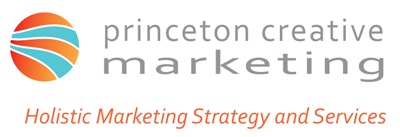In the marketing world, we talk a lot about benefits. Benefits are the real reasons why a customer will buy your product or service: because it offers them some benefit. In other words, it solves a problem for them, makes them feel a certain way, enhances their career or self-image, saves them money… whatever. If you can make the benefits of your offering clear to the customer, then you have a much better chance of making a sale and hopefully building a long term relationship.
Yet as experts in what they do, make, or sell, a business owner or service provider is more likely to focus on the features of their offering. For example, an accountant starting his own firm may want to communicate to potential customers that he has an MBA, that he is knowledgeable in obscure tax law and that he has worked for Fortune 500 companies. A musician might want to say that she has recorded her new album in 192 bit high definition and employed the services of New York’s best session musicians.
But those are features, and not benefits. Although they mean quite a lot to the businessperson themselves, they don’t mean all that much to the potential customer. A businessperson would hope that credentials and impressive technological terms might speak for themselves, but unless they are selling to other accountants or other musicians, to use our above examples, they fall short of getting the customer interested. You only have 20 or 30 seconds in most marketing channels to really create interest in the customer, so you had better focus on the most direct way to make them feel something, and that is typically by making the benefits clear. When customers consider a buying decision, it is more often the affective thought process (more emotional) as opposed to the cognitive thought process (more analytical) that wins out and prompts the decision.
It is helpful to think of benefits as belonging to 4 categories, and if you can find all 4 in your offering and express them clearly to the customer, then chances are you are going to win them over. The 4 types of benefits are as follows:
- Core Benefits – These are the main functional benefits of your product. For example, the core benefit of a Ferrari (or a Hyundai, or any car) is that it provides a way to get from one place to another.
- Expected Benefits – These benefits are often unstated. Using the Ferrari example, it is expected that the car is fast, stylish and expensive. Nice, but no big surprise.
- Augmented Benefits – These are benefits beyond the expected, and may offer added value, surprise or excitement. For example, did you know that a Ferrari is safer and holds its value better than any other luxury sports car? Most folks don’t know that, at first, and it adds a level of extra benefit to that scary price tag.
- Potential Benefits – These benefits are often more implied or imagined (although a lot of advertising displays them pretty clearly), and they create emotional reactions in the customer. For example, a customer imagines him/herself gaining status by owning a new Ferrari, getting the girl/boy, impressing the CEO or client, racing around the Amalfi coast and so on. Whether it’s real or not, the potential benefits often stir the most emotion and ultimately make the sale.
So give it try with your offering. See if you find all four benefits in your product or service, and then see if there is a short, effective way to express this in the Voice of the Customer. If you can’t find all four don’t despair. See if someone else might have a different take on what you do. Often outside opinions are quite valuable and help us to see something we might not otherwise see. But if you really have trouble finding benefits and can only come up with features, maybe you need to rethink your offering a little, or at least enhance it in some way to add benefits and more value to the customer.
